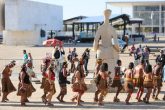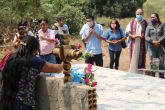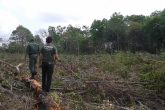Newsletter 906: Two important victories for Indigenous movement
-
President creates special Secretariat of Indigenous Health Care
-
STF: Raposa ruling not binding for other demarcations
***
President creates Special Secretariat of Indigenous Health
signing Provisional Measure
President Lula signed on March 24 the Provisional Measure that creates the Special Secretariat of Indigenous Health Care. The new secretariat, to be part of the Ministry of Health structure, will have its own resources and will replace the National Health Foundation (Funasa), currently responsible for indigenous care, Funase, over the years, has been accused of corruption and diversion of funds.
The measure now depends on the approval of the National Congress, which is to occur within a sixty-day period.
Long time struggle
The creation of the secretariat has been a banner in the struggle of the indigenous movement for many years. In 2008 the issue of indigenous health was highlighted in the Acampamento Terra Livre. This motivated the creation of the Indigenous Health Working Group, within the Ministry of Health, composed of members of government and indigenous leaders. It incorporated discussions on the creation of the secretariat.
In the same year indigenous leaders succeeded in preventing the government from creating the Secretariat of Primary Care and Promotion of Health, which would not have dealt specifically with the question of indigenous health.
Changes
The creation of the Special Secretariat totally changes the management of indigenous health care. It becomes responsible for oversight of all demands and for the creation of public policies exclusively for indigenous health, delineation of which are in turn to be based on directives approved by the National Conferences of Indigenous Health, through the Arouca Law, through Labor legislation and public administration, as well as the Federal Constitution.
For the Vice-President of the Indigenist Missionary Council, Robert Liebgott, the creation of the Secretariat returns these constitutional responsibilities to the competency of the federal government. “The policy that had been developed was considered unconstitutional because it had been founded in the logic of outsourcing of services. Now the Federal Government is once again responsible for providing indigenous health care”, he stated.
DSEIs
As it is to be structured, the Special Secretariat will be a connective link with the Special Indigenous Sanitation Districts (DSEIs), which through the legislation will have administrative and financial autonomy in the provision of services to the communities. The Districts are responsible for the development of district plans, in which all demands will be presented, services and actions carried out, as well as equipment, vehicles and necessary medicines.
These units are responsible for conjoining technical activities of health care. They promote the reordering of the health network and sanitation practices, organize administrative/management activities and stimulate social control. With the administrative autonomy of the Districts the indigenous community is to be more proximate to the management of resources with regard to basic care. With this there will be greater agility in providing services, reducing response time in the actions developed by the institution.
***
STF: Raposa ruling not binding for other demarcation cases
The Commission on Jurisprudence of the Brazilian Supreme Court (STF) denied the request of the National Agriculture and Livestock Confederation (CNA) that October 5th of 1988 be the mark for the so-called “traditional indigenous occupation of land.”
Raposa Serra do Sol
The Federal Constitution states that “lands traditionally occupied by indigenous peoples” have to be recognized, demarcated and safeguarded by the government as indigenous territory. As the Constitution was promulgated on October 5th of 1988, the Federal Court judges concluded that this date be the temporal mark for the determination whether land was to be considered “traditionally occupied” or not, in the turbulent case on the contested demarcation of Raposa Serra do Sol, in the Northern state of Roraima.
This led the National Agriculture and Livestock Confederation to propose that this temporal mark be applied to all demarcation cases of indigenous areas. A so-called sumula vinculante, or binding abridgement in legal terms.
This would have created great obstacles in the demarcation process, because many indigenous peoples did not live right on their ancestral lands in 1988. Many of them had been expelled of their territory long before this date, over the course of decades, mostly by force of the expanding agriculture, in violent circumstances, with or without explicit help of the authorities and always against their will.
Forced removel
The Committee on Jurisprudence of the Supreme Court deferred the proposal on March 18. They concluded that the request of the CNA, first of all, did not meet the formal requisites of such a proposal and, secondly, that it is necessary to have various similar decisions in different court cases to justify a binding abridgement. This is not the case. The Raposa Serra do Sol case was the first ruling that discussed this date as a temporal mark and made clear that even with this mark, there would be many possible exceptions. For example, in cases of forced removal of the indigenous community concerned.
CIMI, through its Juridical Advisor, together with the indigenous organizations, had elaborated an opinion against the petition of the CNAP.






